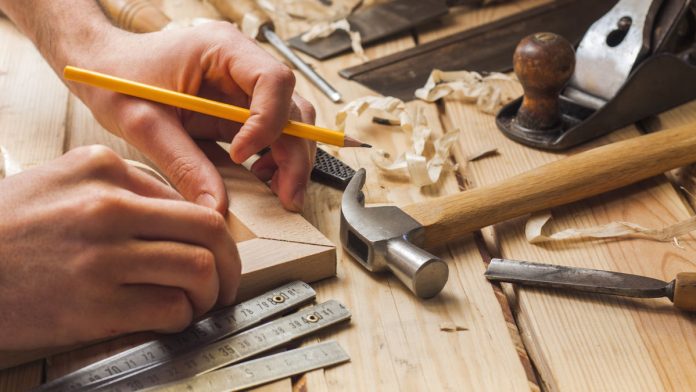Choosing Woodworking Tools For Electrical Applications.
Choosing Woodworking Tools – Security installers will inevitable find themselves doing some woodwork from time to time, whether it’s simply drilling fixings into timber or the more complex business of installing electric strikes using chisels or multitools.
You may also find yourself undertaking basic framing, scarfing pieces of timber or needing to increase strength where required. There may also be locations you needed to remove timber, or your works have damaged existing framing or surrounds that require repair.
Once you embrace it, timber can be a delight – it’s flexible, easy to work, non-conductive, more forgiving than steel framing, very easy to repair, and when properly constructed and maintained using correct wood choices, will last hundreds of years – the world’s oldest timber building has been standing 1300 years.
If you’re putting together a toolbox of woodworking gear, some items will be vital. The rule of thumb is going to be opting for tools that are compact, mulit-purpose and decent quality.
First get a good claw hammer with a fibre shaft and a thick rubber grip. You’ll need a 5m tape measure – not a 3m. You’ll need a set of flat head and Philips head screwdrivers, including PosiDriv drivers. A handplane is another worthwhile addition.
Make sure these tools have solid handles strongly fixed to the shaft. You’ll need a utility knife with extra blades, 12mm and a 20mm bevel edge chisels (at least), a course rasp and a file, sanding blocks and a range of grits. You can carefully use a standard hammer with chisels, but it’s better to use a joiner’s mallet.
You’ll need more than one spirit level, something compact and something long – longer is always better for accuracy. It’s worth buying a magnetic spirit level if you’ll be using this level in other applications. Get one with multiple measuring parameters.
A compact adjustable set square is always worth having, a larger square is useful for framing work, while a plumb bob and string can often remind you that working by eye is deceptive. Just having a bob hanging in your sight line during a project as a point of reference can save a lot of remedial work.

Choosing Woodworking Tools For Electrical Applications
When it comes to choosing a saw, go for a mid-sized crosscut saw, unless you’ll be working in cramped quarters. A longer saw can be easier to use once you’re used to it, as well as being faster. Handsaws are capable of excellent work in the field, require no power and are cost effective. They are also ideal for general sizing cuts prior to more delicate work with a back saw or machine saw. A marking knife to mark planned cuts is also worth having.
If you’re getting more serious, a mitre box and mitre saw may be worthwhile, as well as a coping saw, but you’ll need a work bench if you’re tending towards joinery. If you’re doing a lot of cutting it may be worth buying a circular saw. The quality and ease of cuts is superior, especially if you’re a part timer or not always capable of a straight cut. There are 18V cordless circular saws to be had for a trivial cost these days that are perfect for field framing with soft timber. Use finer blades with higher blade counts for cleaner cuts.
You’ll need power drill with bits and full reverse, variable speed, and an impact selector switch. A modern 18V battery drill is perfect for the sorts of timber you’ll meet. Bear in mind a corded drill is less expensive and has more power to manage paddle bits. Buy quality drill bits, but you’re unlikely to need hardened tips – save your money for quality stainless fixings.
One of the most valuable items in any tool bag no matter what your trade is a bunch of quality clamps. However many clamps you think you need, there’ll come a day you need 1 more – usually when you’re balanced on a ladder at a pivotal moment. Keep clamps clean and lightly oiled so they don’t jam when you need them not to.
It’s worth noting that timber frames in remote applications need not be perfect if they are strong and well made. Hand adze-shaping can create excellent and long-lasting frames in the field from quality treefall like stringy-bark, turpentine or box. Robinia is an increasingly prolific and rot-resistant wood once widely used to make wagon wheels that combines density and light weight with ease of working.
This sort of field carpentry may be applicable if you need to undertake running repairs, or the materials supplied are inadequate and there’s no hardware store nearby. Bear in mind any wood you use needs to be dry.
A nice thing about woodworking tools is that they last a very long time – you can buy quality second hand gear affordably and tools that have a story behind them can be very special to use.
You can find out more about woodworking tools here or read more SEN news here.
“Choosing Woodworking Tools For Electrical Applications.”












